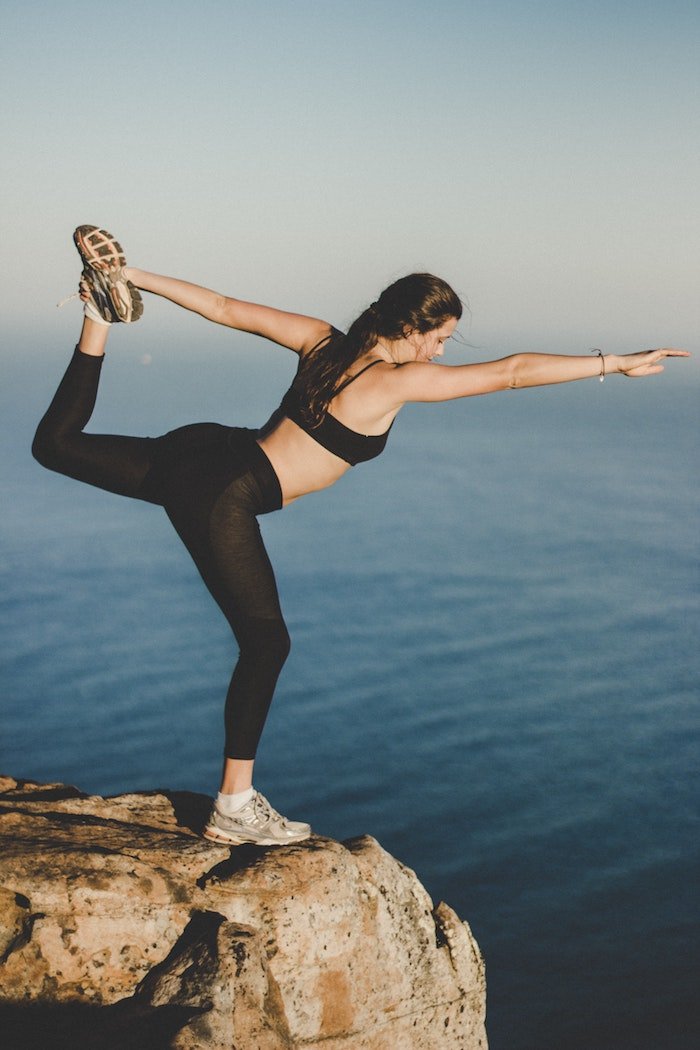How do we achieve balance?
Balance occurs when our centre of gravity is within our base of support. Our base of support includes every point of contact we make with a supporting surface. For example, this is made up by our feet when we’re upright, and our buttocks and upper legs when we’re seated. If our centre of gravity moves too far beyond our base of support, we will stumble or fall unless we can correct our posture quickly. Balance declines with age, and the risk of falling increases, so it is important to include balance work in our exercise routines.
What systems are involved?
1. Sensation/proprioception: we need to be able to judge where we are in space so we can keep within our base of support (or to correct if we are moving outside of it). We learn a lot about where our limbs and bodies are in space simply through touch, but also through a kind of sixth sense that evolves from neurons in our muscles, tendons and joints communicating with our brains about body movement and position.
2. Vestibular system: this is based in our inner ear and gives us constant feedback on how to maintain balance, including postural corrections needed to avoid falling.
3. Visual system: our eyes add to the information already received by 1 and 2.
Note that to be able to maintain our balance using these systems we need strength in our lower extremities and core, and flexibility to be able to move our body back into a balanced position.
Balance is often divided into:
1. Static Balance: this is the ability to maintain postural stability in a fixed position, such as standing.
2. Dynamic Balance: this is the ability to maintain postural stability when some part of the body is moving, such as in walking.
Can exercise improve our balance?
YES! Not only do we need strength and flexibility, we need to challenge the systems that help us balance (see systems involved above.) The easiest way to do this is to incorporate balance exercises into our daily routine.
What exercises can I do?
This depends on your ability. If you prefer a group setting you could try Tai Chi, yoga or a balance class at your level.
If you have any medical conditions that affect your balance, such as Parkinson’s disease or stroke, I recommend you discuss with your MD and see a professional, such as a Physiotherapist, who can assess your needs and provide you with a tailored program.
Here are some exercises to try - remember safety is key! Use a wall or sturdy chair for support or have someone stand nearby. Stand tall and maintain good posture throughout the exercises. For #5 below, ensure you maintain a good chin tuck and have core muscles activated.
1. Weight shifts. Stand with your feet hip width apart. Gently shift your weight to the right and lift the left leg off the floor. Hold for up to 30 seconds and try the right side.
2. Standing on one leg. Put your hands on your hips. Lift your left leg off the floor and bend your knee back. Gradually increase the time/repetitions. To increase the challenge try reaching out your left foot to the side, forwards or backwards or keep moving it.
3. Walk heel to toe for 10 steps. Use a wall for support as needed.
4. Try walking sideways 5 steps each way.
5. Bird Dog. For a much bigger challenge, if you are able to get down to the floor and back up again easily, and your knees are ok in this position, try 4 point kneeling (on hands and knees) on a yoga mat or soft rug, activate your abdominal muscles and then lift your left arm and right leg straight out. Balance in this position for 5 seconds and switch to the other side. This is a great core work-out that also targets your balance skills. As you progress, you can increase the time you spend balancing in this way.
If you can do exercises 1-4 safely, try incorporating them into your day. For example, can you stand on one leg while cleaning your teeth? Or working at the sink in your kitchen? (not while you’re cooking something though!) Can you walk heel to toe around your home or office?
See the links below for more balance exercises and tips:
https://www.mayoclinic.org/healthy-lifestyle/fitness/multimedia/balance-exercises/sls-20076853
https://www.nhs.uk/live-well/exercise/strength-and-flexibility-exercises/balance-exercises/
R. Sian Owen PT
Registered Physiotherapist

